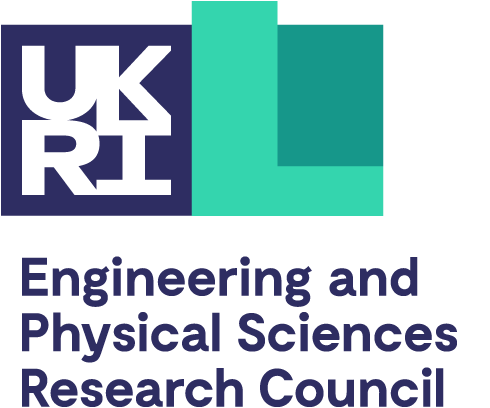Sandpits are residential interactive workshops over five days involving:
- 20 to 30 participants
- the director
- a team of expert mentors
- a number of independent stakeholders.
Sandpits have a highly multidisciplinary mix of participants – some active researchers and other potential users of research outcomes – to drive lateral thinking and radical approaches to address research challenges.
They are led by a director with a group of stakeholders and subject experts working as mentors in support. This group is not eligible to receive research funding so act as impartial referees in the process.
Sandpits are intensive discussion forums where free thinking is encouraged to delve into the problems on the agenda to uncover innovative solutions. Each sandpit is led by a director, defines the topic and facilitates discussions at the event.
The process can be broken down into:
- defining the scope of the issue
- agreeing a common language and terminology amongst diverse backgrounds and disciplines
- sharing understanding of the problem participants’ expertise
- using creative and innovative thinking techniques in break-out sessions to focus on a problem
- turning sandpit outputs into a research project.
Sandpits are intensive events, for the well being of participants. Venues offer relaxation opportunities, and the timetable includes informal networking activities as a break from detailed technical discussions.
Due to group dynamics and continual evaluation it is not possible to dip in and out of the process. Participants must stay for the whole duration of the event.
Sandpit funding is not spread evenly across participants: a variety of outcomes are possible, ranging from a single large research project, to several smaller projects, feasibility studies, networking activities, overseas visits and so on. Outcomes are not predetermined, but are defined during the sandpit.
How to get involved
You can find sandpit funding opportunities and sign up for alerts.
Participants come from a range of disciplines and backgrounds including the arts, humanities and social sciences, and have the right mix of personal attributes, such as willingness to take risks, creativity, and communication skills.
Apply to take part in a sandpit
The mix of participants determines the success or failure of sandpits. EPSRC needs people who have have the right mix of personal attributes and are from a range of disciplines and backgrounds – including:
- the arts
- humanities
- social sciences
- engineering
- physical sciences
- mathematics.
We seek people at different stages in their career as sandpits are not just for senior academic posts.
Sandpits bring together people who would not normally interact to inspire creativity thinking to solve existing problems.
You do not need prior knowledge of the problem area to participate, but must demonstrate an enthusiasm for working at the interface between disciplines.
The criteria for participant selection are the:
- potential to contribute to research at the interface between disciplines
- ability to work in a team
- ability to explain research to non-experts
- ability to develop new and highly original research ideas.
Who is involved
Participants
Participants are selected for each sandpit using an application process: each is assessed on the basis of the skills and expertise they can offer. The range of participants can be extremely diverse, including:
- physical scientists
- engineers
- designers
- social scientists
- psychologists
- healthcare specialists.
The ethos of the sandpit is that participants shape the process and the outputs. It is their responsibility to contribute fully and constructively and this includes making hard decisions about prioritisation of ideas and research groupings.
Stakeholders
People with real experience of the issue provide invaluable insight and a unique perspective. Stakeholders often include industry representatives, government officials, charities, lobby groups or citizens’ groups.
Their input and knowledge helps participants explore the issue and shape potential ideas. This can include challenging presentations on the current state of play and can lead to future involvement with research groups.
Director
The director is fundamental to a successful sandpit. A director, from the academic or the business community, is appointed to each sandpit and it is their vision and leadership that shapes the process.
Work starts about six months before a workshop is held, appointing mentors and ensuring the call for participants reaches those with the desired skills.
During the sandpit, the director, with support from mentors and facilitators, needs to maintain the group’s focus on the key aim and ensure the intensive environment remains constructive.
After the sandpit, the director plays a key role in validating, providing advice and monitoring projects.
Mentors
A team of mentors work alongside the director in selecting the participants and providing objective advice, feedback and input at the sandpit.
Selected for their knowledge and experience, their overall aim is to ensure the sandpit leads to high-quality innovative research. Like the director, mentors need the intellectual standing and impartiality to lead the group through this challenging experience.
Facilitators
While the director and mentors are responsible for the content of the sandpit, the facilitators are responsible for the process.
They design the activities and schedule sessions to create an environment where innovative ideas can be formed, developed and implemented.
In the intensive sandpit environment, facilitators need to constantly adapt schedules and activities to maintain the group’s focus.
Eligibility for funding
Only eligible researchers may receive funding from a sandpit.
European and global interactions may be valuable for the event, and could be discussed in the planning.
Industrial participation is not required, but sandpits can be enriched by their collaboration.
The process
Interact and create mission statement
Here the group focuses on the specific issue of the sandpit. Through interaction with invited stakeholders they debate the problems in detail to build a comprehensive picture of the situation.
This stage can include site visits to give participants a clear understanding of specific issues.
Mapping the problem begins to highlight technology, knowledge and research gaps that could hold the key to future solutions.
Activities could include:
- site visits to further explore the issues
- vision-setting through creative cartoon strip workshop
- a night learning how to play a musical instrument
- friendly team competition.
Clarify and create problem statement
Here the group focuses on the specific issue of the sandpit. Through interaction with invited stakeholders they debate the problems in detail to build a comprehensive picture of the situation.
This stage can include site visits to give participants a clear understanding of specific issues. Mapping the problem begins to highlight technology, knowledge and research gaps that could hold the key to future solutions.
Activities could include:
- site visits to further explore the issues
- a night networking and building ideas
- friendly team competition.
Start forming ideas
With a clear understanding of the issue, and helped by mentors and facilitators, the group begins to form ideas in response to the problem.
Drawing on the discussions, experiences and site visits, smaller groups begin to form around the emerging ideas, self-selecting the skills and expertise needed for success.
Activities could include:
- ideas generation and clustering
- hearing from representatives from industry, government, charities or lobby groups
- discussing emerging ideas over dinner and getting feedback.
Develop, test and refine ideas
Through a series of activities, the newly formed research groups develop, test and refine their ideas. The proposals are repeatedly examined, pitched, reworked and tested again.
At this stage, groups begin to look at funding issues such as the level of resources required.
Activities could include:
- building pebble structures to get the group thinking differently, followed by project planning
- a test lab where fresh ideas are pitched to a panel of experts for feedback and development
- continuation of project planning.
Implement
At the final stage, proposals are shortlisted and ranked in priority order by using the sandpit assessment criteria and the group feedback as a whole. Then a final recommendation is made to EPSRC by the director and mentors.
The sandpit is reviewed before finally drawing to a close.
Activities could include:
- groups presenting projects as part of the real-time peer-review process before proposals are ranked in order, based on their fit to the sandpit assessment criteria budget
- making funding decisions
- reviewing the week and feedback on the sandpit.
Find out about:
Sandpit experience and impact
Sandpits make a real impact on the scientific landscape; they stimulate new research, and encourage exciting collaborations. Participants continue to be influenced by its ethos of ambition and adventure.
The IDEAS Factory sandpit mechanism is unique and has already shown a universally positive impact for those attending.
The sandpit has:
- established independent and sustainable research communities
- created an observable culture change amongst participants who are embracing creativity and originality
- facilitated an increase in the capacity of multidisciplinary researchers and their interactions in the UK.
Independent sandpit evaluation panel
Outcomes of sandpits could include:
- a single large research project
- several smaller projects
- feasibility studies
- networking activities
- overseas visits.
The outcomes are not predetermined but are defined during the sandpit.
Last updated: 17 August 2021


